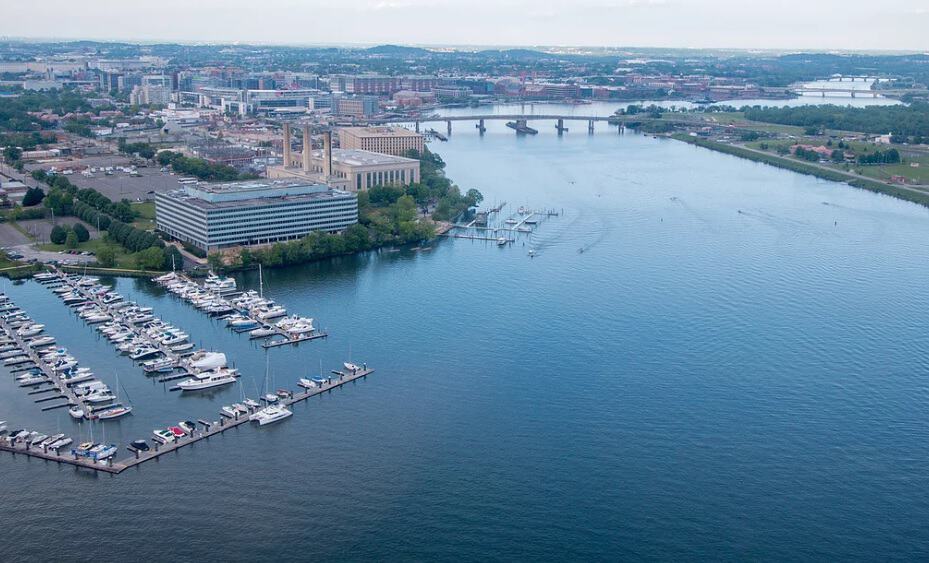From the Wharf to Nationals Park and Audi Field to The Yards Park, development along the water in Washington, D.C. has exploded in recent years. People are using the District’s two rivers, the Potomac and Anacostia, in record numbers – fishing, boating, kayaking, paddle boarding, walking along bridges and boardwalks, and eating at waterfront restaurants.
In an interactive exploration of D.C.’s waterfront growth, the Washington D.C. Economic Partnership reports that in the last 17 years, 27% of the city’s development has occurred along the Anacostia.
“We are remembering and realizing that we are a city on two rivers,” says Councilmember Charles Allen of Ward 6, the area of D.C. with most of the waterfront development.
Seeing this extreme growth, on July 9, Allen and eight other councilmembers re-introduced the District Waterways Management Act – a bill that would help manage traffic, logistics, and safety along the two rivers. First introduced in 2017 but never passed, this new version incorporates critical feedback from local residents, boaters, and people who use the river to better shape the bill.
If passed by DC Mayor Muriel Bowser, there would be three major steps to come out of this District Waterways legislation. The first is to create a Waterways Management Authority, who would coordinate the city’s response to healthy and safety concerns along the river. The second is to form a Management Commission, composed of 13 voting members representing local and federal interests. Lastly, the Commission would make a Management Action Plan to determine the course forward for river management in the city.
“So far, the feedback has been very positive,” said Allen of the re-introduction of this bill. “We listened to a lot of different stakeholders and incorporated their feedback into this version.”
With the exponential growth of development along D.C.’s waterways and no clear management organization in charge, the programs created in this bill would be critical to keeping people safe and healthy on the water. And with construction and use of the waterfront only expected to grow, this will continue to be an important issue for the city in the future. Allen hopes to see this bill through the mayor’s office by the end of the calendar year, assembling groups in a year’s time if all goes according to plan.
Allen also highlighted how important this bill would be for ensuring equal access to the facilities on the water: “These rivers play a really important role in the city. One of our biggest priorities is making sure that the waterfront is affordable and accessible for all.”
-Emma Johnson



